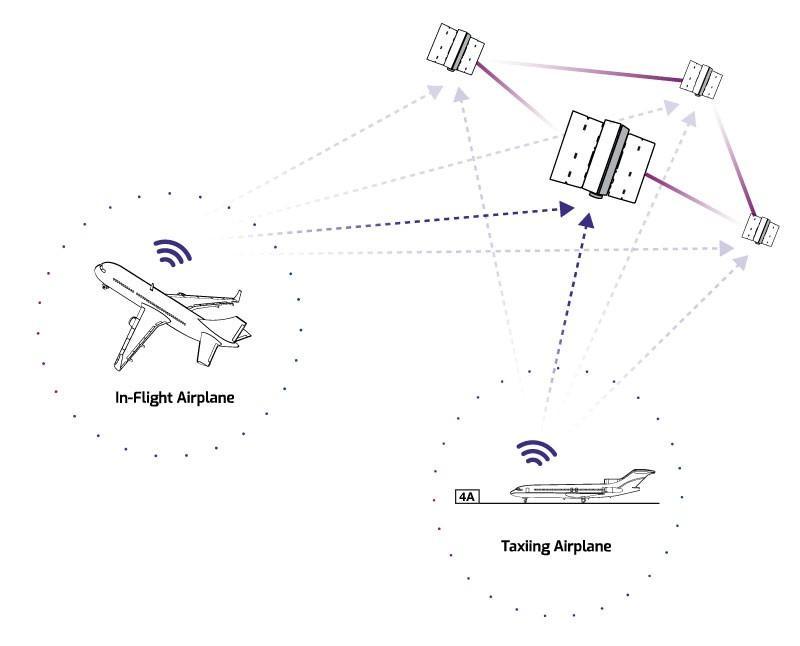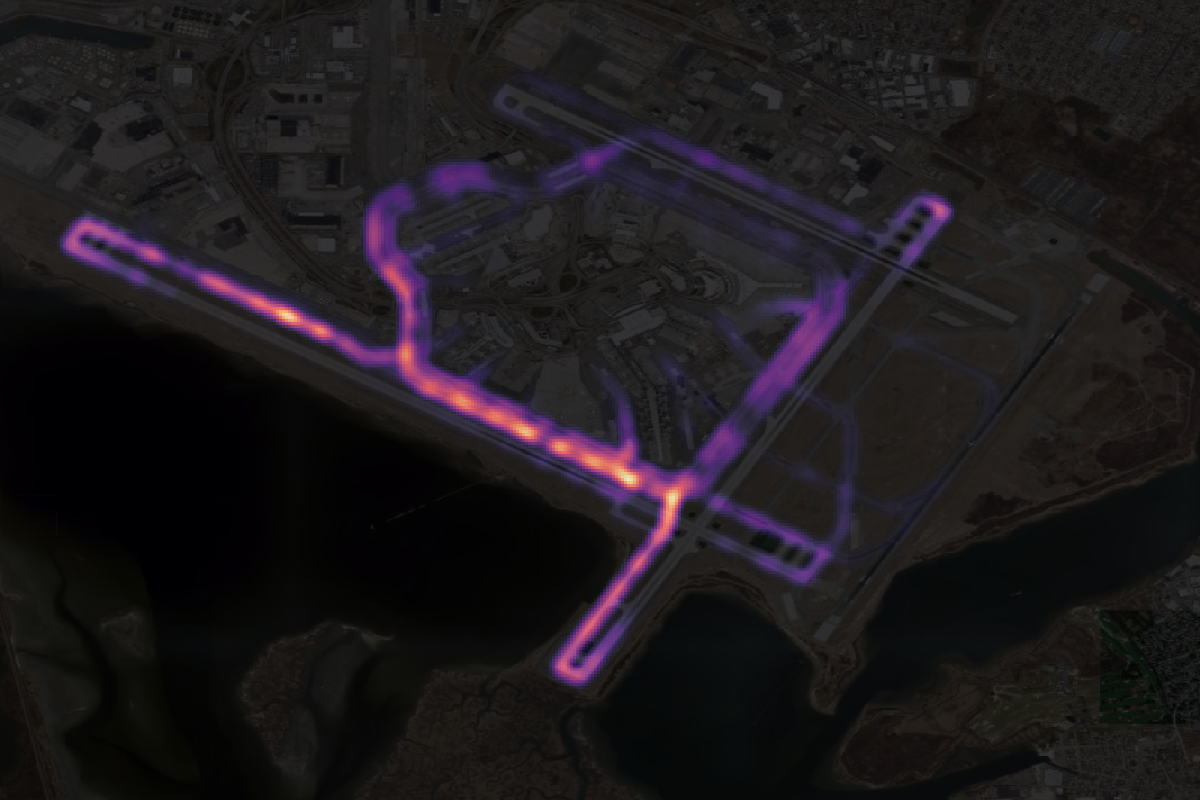Spire’s Groundbreaking Space-Based Solution Will Elevate Aviation Tracking
VIENNA, VA / ACCESSWIRE / September 19, 2023 / Advancing aviation tracking is vital for safer travel, improving fuel efficiency, and airline security. Most modern planes send off a transponder beacon, called ADS-B. Current ADS-B systems, which have been in operation for around 15 years have faced challenges being widely mandated across all regions and air spaces. As well, ADS-B relies on the Global Navigation Satellite System - GNSS, also known as GPS - for global positioning, which can be jammed, unreliable, and spoofed, or even not included in an aircraft's ADS-B broadcast.

While ADS-B has increased visibility and improved flight situational awareness, it relies on ground- and space-based receivers transmitting on a single signal to detect aircraft. In remote regions - such as over oceans, among mountains, or polar transit - ground coverage for geolocating planes is lacking, relying on aircraft to be outfitted with an ADS-B antenna capable of transmitting to satellites. Security is also a concern for signal jamming when broadcasting on a single frequency.
ADS-B faces two major challenges: high installation and equipment costs and GNSS data reliability. While local governments can mandate ADS-B use, GNSS signals can be jammed. GNSS also requires aircraft operators to be good actors in reporting an accurate location.
The industry requires an update that can track, verify, and validate aircraft via telecommunication signals anywhere on the planet. Not only that, but also alleviate the burden on local stations during peak flight traffic. This solution should easily enable inclusion worldwide without requiring additional equipment on every plane.
Spire, in partnership with the European Space Agency (ESA), is actively developing this system, called EURIALO. It is a new aviation tracking solution that will be more efficient, accurate and - most importantly - backward compatible. It leverages existing telecommunication signals that all planes emit to track aircraft locations.
WHAT ABOUT ADS-B?
While ADS-B is a substantial enhancement for the aviation industry, it still faces ongoing hurdles to standardize its use. More importantly, due to the nature of GNSS signals, safe airline surveillance requires aircraft operators and equipment to accurately report a location.
Canada, an early adopter of ADS-B in 2009, still faces pushback mainly caused by equipment installation timelines. Canada has set a deadline of no earlier than 2028 for ADS-B coverage below 12,000 feet. EURIALO aims to be in a demonstration phase with 4 satellites by 2025.
The Malaysian Airlines flight MH-370 incident in 2014, highlighted the need for improved aircraft tracking. The incident occurred when space-based ADS-B tracking was in its infancy, leaving few clues to MH-370's whereabouts. EURIALO aims to provide persistent, verifiable, situational awareness through an efficient space-based solution. EURIALO aims to ensure the ability to locate aircraft of all sizes and altitudes, anywhere on Earth.
Spire Global already tracks clear-air turbulence around the world from space, enhancing aviation safety. Spire's EURIALO constellation, in partnership with the ESA programme of Advanced Research in Telecommunications Systems (ARTES), will introduce a new form of aviation surveillance, offering precision tracking and another step towards safer skies and greater fuel efficiency.

Current aircraft tracking relies on two systems. GNSS provides geolocation data directly to aircraft. That location data is sent on in the form of ADS-B signals out to satellites or ground stations. The second system is an on-the-ground air traffic control radar. While these are effective, ground radar only operates within a limited radius and provides no coverage in remote areas. While ADS-B solves inefficiencies in aircraft surveillance, the future of the aviation industry requires a more advanced system than is provided by GNSS.
More planes in the sky, slower uptake of ADS-B in developing countries, GNSS accuracy, and short-staffed air traffic controllers across the U.S. as recently reported in the New York Times, are driving forces behind the need for a modernized aircraft surveillance system.
In 2025, Spire Global and ESA aim to deploy the demonstrator mission for this revolutionary tracking system that works globally with existing onboard technology- no installation required.
HOW DOES IT WORK?
EURIALO's multilateration technology aims to accurately and autonomously validate aircraft positions, eliminating the need for GNSS and ground-based radar systems.

Each satellite overhead receives a radio signal from an airplane. The EURIALO satellites will record a radio signal's precise time-of-arrival to the satellite - with that the constellation can determine the location based on minute differences in times-of-arrival to separate satellites passing overhead.
It's similar to solving for a triangle's missing angle in high school math class, but each side is a radio signal measured in fractions of a second and each corner is a satellite. The point in question is the aircraft. This multilateration method works even when geolocation signals are disrupted, supplementing accurate tracking anywhere on Earth.
While rules for ADS-B are by flight levels and regions, multilateration has the potential to work immediately out of the box worldwide, at all altitudes. This has the potential to even monitor aircraft taxiing traffic to reduce on-the-tarmac fuel use and optimize taxiing times for passengers. While Spire's ADS-B data captures much of this, multilateration would provide this coverage even in unmandated ADS-B airports.

IS IT RELIABLE?
Extremely. ADS-B systems can become overloaded in dense areas or during high travel seasons.
In the same way a busy online store offloads traffic to nearby servers, multilateration from space can reduce overloads on ADS-B terrestrial stations by offloading to regional ground links for immediate access - an "Amazon Web Service" of aircraft tracking.
In Canada this August, operators have pushed back on a space-based ADS-B mandate because of the amount of time it will take to install additional equipment on each plane across the country. Spire's solution would create a turn-key solution for situational awareness in a country like Canada, as its only requirement is a radio signal to be broadcast from the aircraft - no expensive installations. The potential for this technology means other countries and regions could easily join Spire's EURALIO program. Any country or region could be onboarded quickly as multilateration leverages existing technology to decipher locations. EURIALO could bring a safe and effective aviation surveillance strategy online anywhere worldwide at the click of a button.
This extends to areas of regional conflict. Often ADS-B and GPS are jammed or inaccessible - for instance pilots flying over the Black Sea often experience GNSS jamming as Russia overwhelms the system to cloak their own locations. Not only can pilots experience bad geolocation data, but jamming GPS can show the wrong altitude which could adversely affect inexperienced pilots.
Spire Global already uses a similar technique for tracking ships at sea that are spoofing their locations as part of Spire's Radio Frequency Intelligence tools.
Flying Magazine lists the full dangers of GPS jamming while flying, including loss of waypoint navigation, terrain warnings, weather awareness, and route deviations.
WHEN WILL WE HAVE EURIALO?
Spire is now in the planning stages of leading a consortium of major industry players to develop the mission and system design for the EURIALO constellation. The demonstrator mission of 4 satellites is aiming for a 2025 launch.
Contact:
Ben Hackman
benjamin.hackman@spire.com
202-301-5127
The forward-looking statements included in this press release, including for example, the quotations of management, statements regarding continued growth, statements regarding Spire's expected timing to generate positive cash flow, statements regarding increasing its ARR, statements regarding profitability, and statements regarding the benefits of its solutions to its customers and generally, reflect management's best judgment based on factors currently known and involve risks and uncertainties. These risks and uncertainties include, but are not limited to, potential disruption of customer purchase decisions resulting from global economic conditions including from an economic downturn or recession in the United States or in other countries around the world, relative growth of its ARR and revenue, the failure of the Spire and exactEarth businesses (including personnel) to be integrated successfully, the risk that revenue and adjusted EBITDA accretion or the expansion of Spire's customer count, ARR, product offerings and solutions will not be realized or realized to the extent anticipated, the ability to maintain the listing of Spire's securities on the New York Stock Exchange, the ability to address the market opportunity for Space-as-a-Service, the ability to implement business plans, forecasts, and other expectations, and identify and realize additional opportunities, the risk of downturns, new entrants and a changing regulatory landscape in the highly competitive space data analytics industries, developments in and the duration of the COVID-19 pandemic and the resulting impact on Spire's business and operations, and the business of its customers and partners, Spire's potential inability to manage effectively any growth it experiences, Spire's ability or inability to develop new products and services, and other risks detailed in reports Spire has filed with the Securities and Exchange Commission, including Spire's Annual Report on Form 10-K, Quarterly Reports on Form 10-Q and Current Reports on Form 8-K. Significant variation from the assumptions underlying Spire's forward-looking statements could cause its actual results to vary, and the impact could be significant. All forward-looking statements in this press release are based on information available to Spire as of the date hereof. Spire undertakes no obligation, and does not intend, to update the information contained in this press release or the accompanying conference call, except as required by law.
SOURCE: Spire Global
View source version on accesswire.com:
https://www.accesswire.com/785142/spires-groundbreaking-space-based-solution-will-elevate-aviation-tracking
Released September 19, 2023